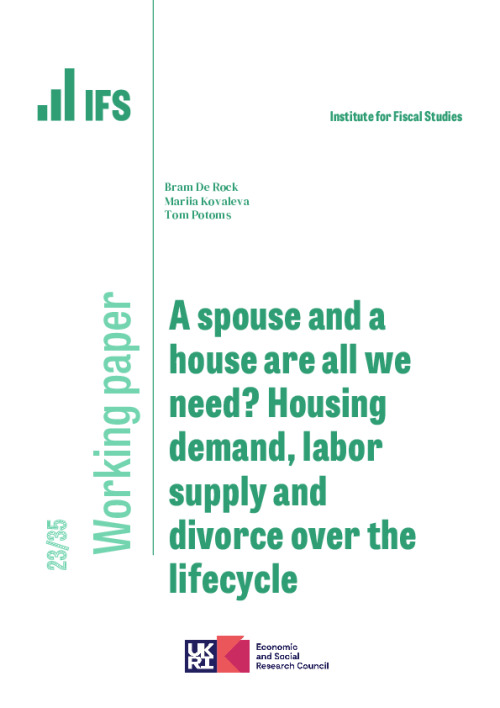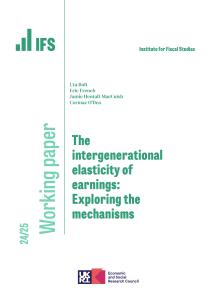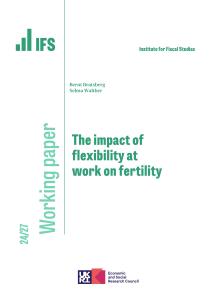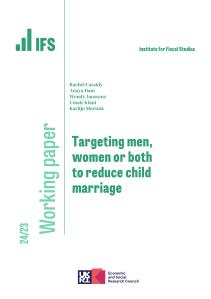Downloads

Download working paper here
PDF | 1.2 MB
To analyze the impact of changes in the value of marriage on household decisions, we present a limited commitment framework of household behavior in which decisions are made regarding labor supply, divorce and housing demand over the lifecycle. We identify and estimate our structural model using exogenous variation in female labor supply and divorce rates due to the White v. White case in England. We conclude that limited commitment dampens the added worker effect, while the changes in the value of marriage due to a housing price shock have an asymmetric impact on individual welfare both across gender and marital state. We also show that tightening the credit market in different ways can lead to opposite behavior in terms of household savings andfemale labor supply.
Authors

Research Associate Université libre de Bruxelles
Bram is a Research Associate of the IFS, a Professor of Economics at ULB and a Professor of Mathematics and Statistics at KU Leuven.
PhD Candidate European Center for Advanced Research in Economics and Statistics
Senior Lecturer in Economics University of Sussex
Working Paper details
- DOI
- 10.1920/wp.ifs.2023.3523
- Publisher
- Institute for Fiscal Studies
Suggested citation
B, De Rock and M, Kovaleva and T, Potoms. (2023). A spouse and a house are all we need? Housing demand, labor supply and divorce over the lifecycle. 23/35. London: Institute for Fiscal Studies. Available at: https://ifs.org.uk/publications/spouse-and-house-are-all-we-need-housing-demand-labor-supply-and-divorce-over (accessed: 29 June 2024).
More from IFS
Understand this issue

How important is the Bank of Mum and Dad?
15 December 2023

Social mobility and wealth
12 December 2023

It's time to stamp on a tax that penalises landlords and renters
22 January 2024
Policy analysis

Making mortgage guarantees permanent will help some first-time buyers, but only if they can afford a bigger mortgage
6 June 2024

How do the last five years measure up on levelling up?
19 June 2024

Conservatives' plan for child benefit withdrawal goes some way to fixing a bizarre system - but misses an opportunity for a more fundamental reshape
6 June 2024
Academic research

The intergenerational elasticity of earnings: Exploring the mechanisms
3 June 2024

The impact of flexibility at work on fertility
11 June 2024

Targeting men, women or both to reduce child marriage
28 May 2024